What is potentiometer? In this article from Linquip, we will discuss the answer to this question and talk about this resistor in detail. After reading this article, you can easily talk about potentiometers, their types, etc. Continue reading to gain more information about this resistor.
What is Potentiometer?
A potentiometer is a sort of measuring instrument. It’s sometimes called POT which is short for potentiometer. Potentiometer definition is simple: It is considered as a three-terminal resistor and can control the flow of electric current. These voltage dividers can help you measure electrical potential or voltage.
A potentiometer is referred to as a pot. A variable resistor is a potentiometer. A potentiometer is a three-terminal variable resistor that may be adjusted manually. A potentiometer is an important Product of employing Industrial Tools. Potentiometers are provided by several Suppliers And Companies, different manufacturers, and a lot of distributors and there are a lot of Potentiometers for sale on Linquip.
A full list of potentiometer services is available on the Linquip website, which covers all OEM fleets. Linquip vendors can assist you with this. Please contact Linquip’s Potentiometer Experts to learn more about how to connect with a wide choice of Service Providers who consistently deliver the highest quality products.
You can easily vary the flow rate manually with the help of a potentiometer without having to change any other component in your circuit. By varying the resistance, you’ll be able to measure the potential differences between a known and an unknown voltage. They can help you measure an unknown voltage by comparing it to a known voltage. This known voltage will be drawn by a supply source.
What are Potentiometers made of?
Potentiometers are made of resistive materials. These materials include carbon composition, wire-wound, conductive plastic, and cermet.
Carbon is the most common material that is used for creating potentiometers. Carbon is affordable and its wear characteristics are perfect for making a potentiometer.
Pots that are made from wire-wound are long-lasting and have high accuracy. They are usually used when high power applications are needed.
Conductive plastic unlike wire-wound feels very smooth in your hand. It can perform many cycles before wearing down. The downside of these material types is that they are expensive and are suitable for high-end equipment since they can provide a high resolution as well as low noise levels.
Cermet is among materials that can handle different temperatures, whether high or low. The problem whit this material is that they are also expensive like conductive plastic and they can only handle a small number of cycles. They are perfect for systems that don’t require regular adjusting.
Shared Characteristics of Potentiometers
All potentiometers have the same characteristics, no matter their size, shapes, etc.:
-
- Three terminals: If you’ve ever searched “what is potentiometer”, all the answers you saw showed that this particular unit contains three terminals. So, potentiometer connection points are three, no matter the type or the size.
- All potentiometers have a movable part (it can be a slider, a knob, or a screw). You can move this part easily to vary the resistance between two terminals (one of them is the middle one.)
- You can change the resistance between the middle terminal and one of the outer terminals ranging from zero to the maximum resistance.
- The maximum resistance of the potentiometer is the resistance between the two outer terminals of a potentiometer. This number is constant and is fixed. You can’t change this resistance by moving the slider, knob, or screw.
What Is Potentiometer Class 12?
A potentiometer is a device that measures the difference in potential between two points in a circuit. As we all know, the amount of labor involved in moving a charge from one location to another is the potential difference. When a circuit has a potential difference, current flows through the circuit. The resistance changes linearly or logarithmically when you turn the knob on a potentiometer. The taper refers to how the resistance varies over time. With a linear taper potentiometer, rotating a knob a specific amount changes the resistance by a certain amount, regardless of the knob’s location.
Potentiometer Symbol
Two symbols are used to show potentiometers. One of them is more popular in America and the other one is considered as an international standard symbol for potentiometers. The American standard contains zigzag lines with three terminals that are placed between two straight lines. The international standard contains a rectangular box with three terminals that are also placed between two straight lines. You can see these two symbols in the picture below:
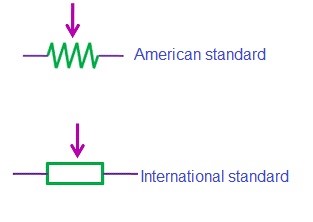
Construction of Potentiometers
Now you know “what is potentiometer”. But what about its construction?
A normal potentiometer contains different parts such as three terminals, a resistor, a wiper, a shaft, and some wires. The potentiometer’s body is constructed from resistive materials. It is normally from the carbon particles in graphite, plastic, resistive wires, and other materials that are combined from ceramics and metals called Cermet.
Each potentiometer contains two parts: sliding and non-sliding sections. The wiper is the sliding contact of the potentiometer which is movable with the wire. The movement of wipers can be either rotational or translatory or even both of these motions.
Two terminals of the potentiometers are connected to both ends of your resistive element (AKA the track) while the third one is connected to the sliding contact (the wiper or sliding wiper). This terminal has been designed to control the variable resistor. You can change the applying potential at the resistor’s end to control the potential of the third terminal. The resistive element can be angled or flat. With the angled one, the wiper should move rotary and with the flat design, the wiper moves linearly.
Potentiometer Diagram
The potentiometer has two symbols, one of them is considered as its international standard symbol and the other one is the American symbol used to show potentiometers. The IEC standard symbol for the potentiometer is a rectangle between two straight lines and the ANSI standard potentiometer symbol contains two straight lines with zigzag lines in the middle. You can see these two symbols below.
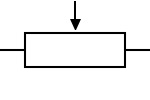
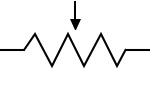
Here you can see the diagram of a normal potentiometer.
Types of Potentiometer
There are usually three types of potentiometer:
-
Trimmer Pot or Trim pot
This potentiometer type is usually used for fine-tuning an electrical signal and is typically adjusted once or very infrequently for such purposes.
-
Thumb Pot or Thumbwheel Pot
Thumbwheel pot has been designed in a way that is adjusted by a small thumbwheel. This small rotating potentiometer is also used for infrequent adjustments.
-
Slide Pot or Slider Pot
The third most popular potentiometer type is slide pot or slider pot. Depending on the installation of this design, you can either move the wiper up and down or left and right for adjustment purposes. This construction is divided into two main types: Rotary Potentiometer and Linear Potentiometer.
- Rotary Potentiometer is normally used for obtaining an adjustable supply voltage to an electrical circuit or a part of an electronic circuit. You can move the wiper on the semi-circular resistance that is placed between the potentiometer’s two terminal contacts with the help of a knob. The radio transistor’s volume controller has a rotary potentiometer and its knob is used to control the supply to the amplifier.
- Linear Potentiometer works the same as a rotary potentiometer but the movement, as you can guess, is linear on the resistor. A track is attached along with the resistor that enables the slide of the sliding contact on the resistor. You can use linear potentiometers to measure the battery cell’s internal resistance, the voltage across a circuit’s branch, etc. the most popular example of using such potentiometers is in the equalizer of music and sound mixing systems.
What does a potentiometer do and how does it work?
Potentiometers are electronic components. They can work as a voltage divider to help you obtain an adjustable output voltage at the wiper (or slider) from a fixed input voltage that’s applied throughout the two terminal ends of the potentiometer.
Their sliding contact or wiper moves to provide a uniform resistance. The input voltage in potentiometers is applied across the resistor’s length. The voltage drop that happens between the fixed and sliding contact shows the output voltage. This is shown in the picture below:
Potentiometer Circuit
A potentiometer is connected to a circuit via its three terminals. Two of the terminals that are fixed are connected to both ends of the resistive elements and the other one will be connected to the wiper. The diagram below shows the voltage supply that is connected across the two fixed terminals and the middle terminal is connected to the wiper.
What is a potentiometer used for?
Potentiometers have different applications. The most popular one is in audio systems for adjusting volume. Televisions and computers also benefit from potentiometers. They are used in both these devices for changing the picture brightness. There are also other applications such as measuring a battery cell’s internal resistance, comparing the EMF between a standard cell and a battery cell, measuring the voltage across a circuit’s single branch.
They are used in different industries for different applications but the ones mentioned above are the most popular applications. You can use them as a calibration component, control input, and even position measurement.
A rotary potentiometer (and sometimes a slide pot) are both used in audio control systems for changing the volume and the loudness, frequency attenuation, and many other audio signals’ characteristics.
They can also help in a servomechanism to create closed-loop control with the help of position feedback devices. The angle and speed in DC Motor are measured with the help of this motion control method.
Another application of potentiometers is for computational purposes. Potentiometers that have high precision are used in analog computers for scaling intermediate results by demanded constant factors. They can also be used for setting the initial conditions that need calculation.
Advantages and disadvantages of potentiometers
Just like any other unit, potentiometers also have advantages and disadvantages. Here we will list the most important ones:
Advantages
- High reliability
- Small size
- Low power dissipation
Disadvantages
- They are affected by the environment’s temperature.
- No external triggers should impact the input and the output of the circuit.
That was all there’s to know about potentiometers and how they serve us in our everyday life. Now you can easily understand why such a small unit can affect our lives to a great extent. What do you think about potentiometers? Share your thoughts in the comment section and feel free to sign up on Linquip to talk to our experts and get all the answers you need about potentiometers.
Potentiometer Application
They are normally used for controlling electrical devices. They are usually used to control small power amounts (less than a watt.)
When you want to use potentiometers for comparing purposes, keep in mind that no current should flow from the source that is under test to ensure an accurate result.
They are used for controlling the volume in audio equipment for changing loudness or different characteristics of the device’s audio signals.
Potentiometers have other applications such as controlling brightness and picture contrast in computers or televisions.
If you’ve reached the end of this article, it means that you have the answer to “what is potentiometer?” by now and know different potentiometer types and functions. Comment below and let us know what you think about this resistor and share your thoughts with us and our readers. Plus, you can easily signup on Linquip to talk to our experts and gain more useful information about potentiometers.
Download What is potentiometer PDF
Buy Equipment or Ask for a Service
By using Linquip RFQ Service, you can expect to receive quotations from various suppliers across multiple industries and regions.
Click Here to Request a Quotation From Suppliers and Service Providers
Read More on Linquip
- Ultimate Guide: What Is Linear Potentiometer
- What is Rotary Potentiometer? What It Does for Us
- What Is a Digital Potentiometer? An Explanation on the Working Principle and Advantages
- Potentiometer Connection, Working, Circuit Diagram, & Wiring Guide
- What is the Difference Between Potentiometer and Rheostat?
- Types of Potentiometers: The Ultimate Guide to Learn About Different POT Types
- What Is CNC Machining & How Does It Work? (A Comprehensive Guide)
- What is Electrical Identification? (Ultimate Guide)
- What is the Core Difference between Thermistor and RTD?
- What is a Paper Capacitor?
- What is Differential Pressure Sensor?: An Ultimate Guide
- What is Synchroscope? Method & Working Principles
- What is Non-Polarized Capacitor? Definition & Usage
- What is Paper Capacitor Used for?
- What is Mica Capacitor Used for?
- What is Electrolytic Capacitor? Usage & Application
- What is Film Capacitor & What is it used for?
- What is Capacitor and How it Works?

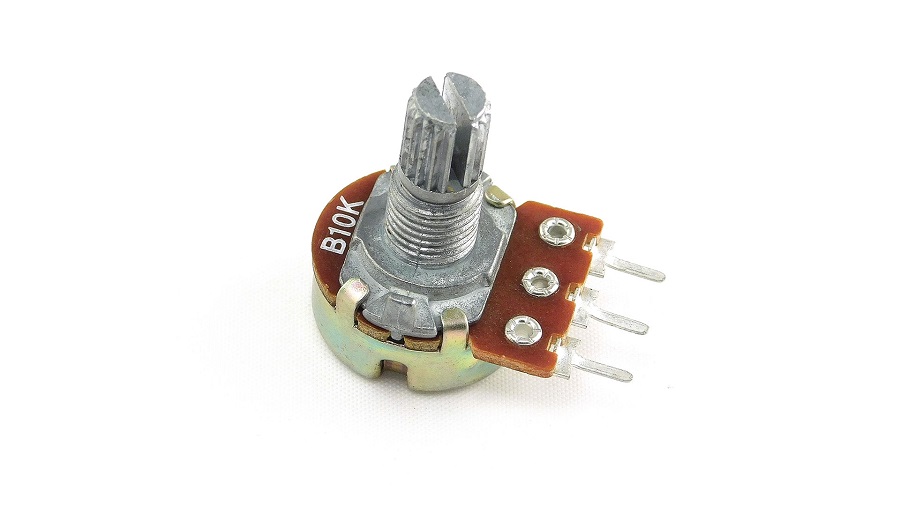
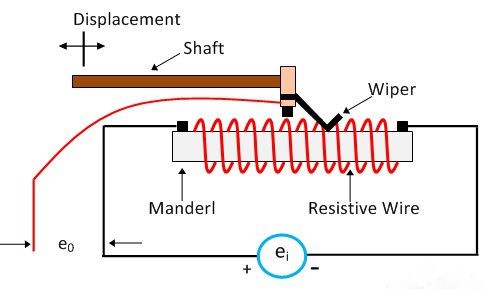
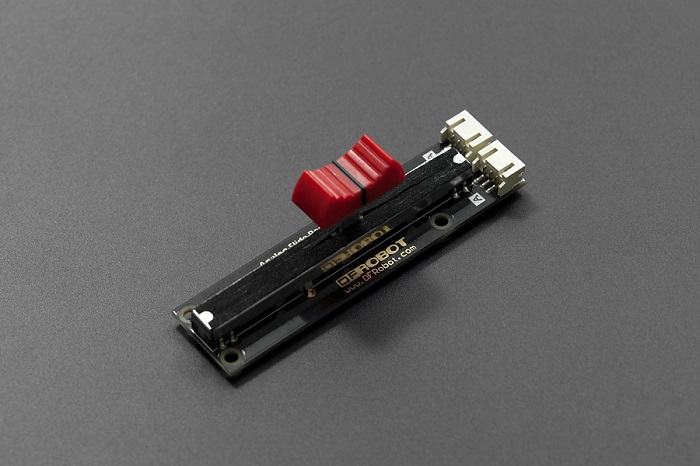
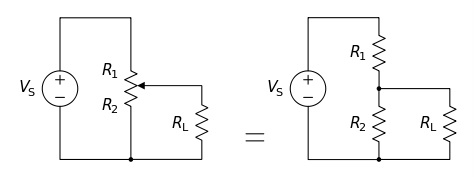
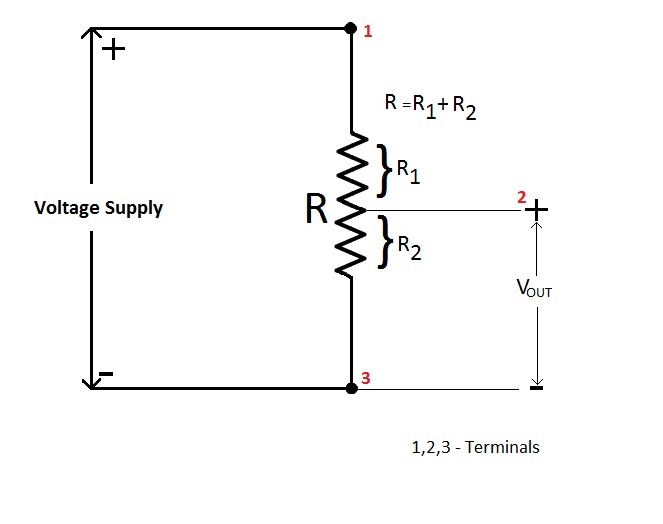


Can we give 24 DC voltage